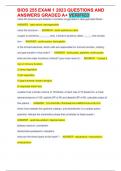Samenvatting
Summary Literature SIPA / Social influence, Public Communication & Advertising
- Instelling
- Universiteit Utrecht (UU)
Summary of all the literature for the Social Influence, Public Communication & Advertising/ SIPA course at the University of Utrecht, as part of the social, health & organizational Psychology masters.
[Meer zien]













